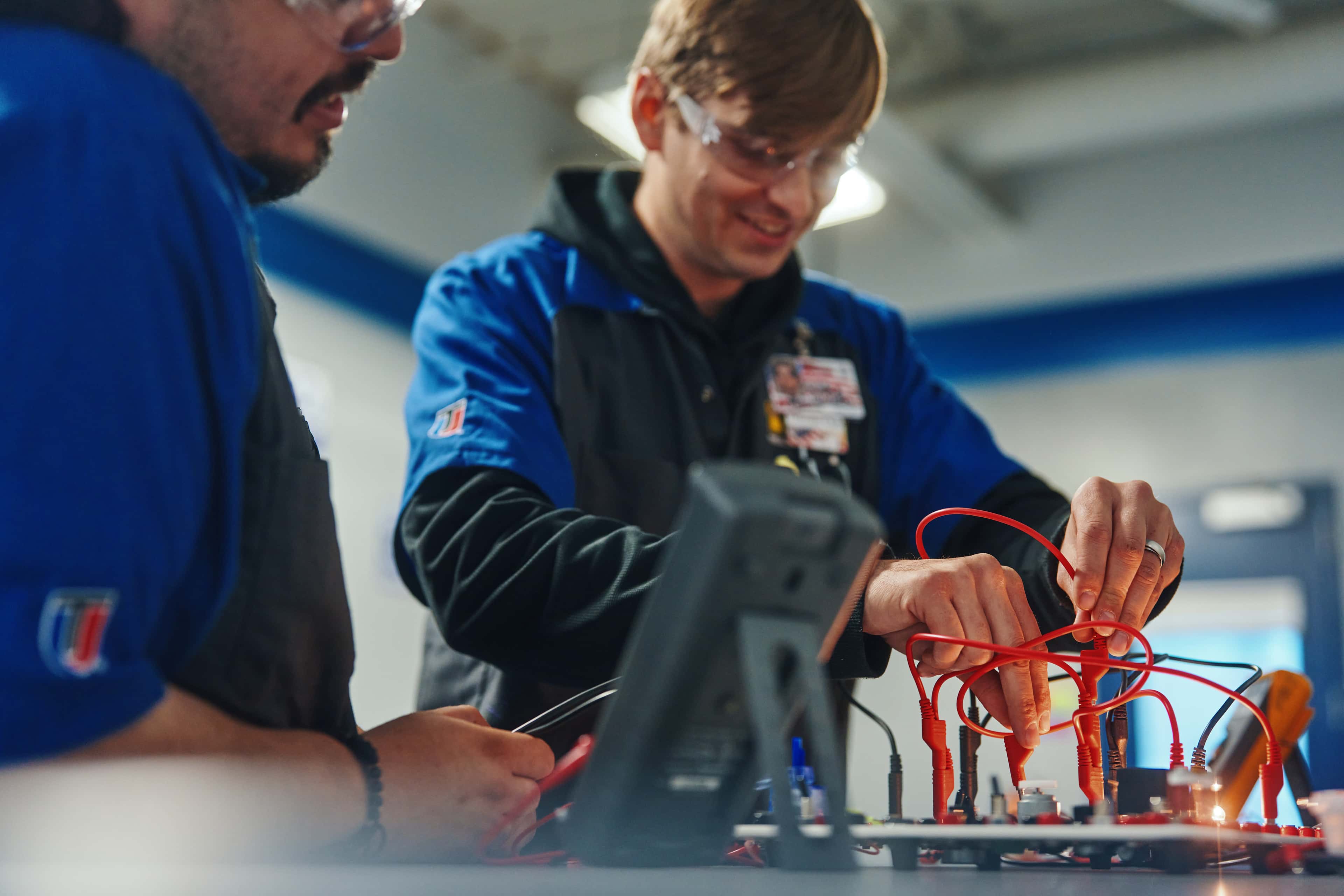Today’s vehicles are smarter and safer than ever, and one of the most innovative safety features is the adaptive front lighting system.
If you’ve ever wondered, "What is an adaptive front lighting system?”, you’re not alone. This cutting-edge technology is changing the way people drive at night and in low-visibility conditions.
Adaptive lighting in cars automatically adjusts your headlights to respond to changing road conditions, vehicle speed and steering input. This means better visibility, improved safety and a more confident driving experience, especially when conditions are less than ideal.
At Universal Technical Institute (UTI), students enrolled in the Automotive Technology program are taught how to maintain and repair a variety of vehicle components, including lighting systems.
Keep reading to learn more about how adaptive lighting systems work and how you can train at UTI to work on them as an automotive technician after graduation.1
How Adaptive Lighting Systems Work
Sensors and control modules
At the heart of adaptive lighting in automobiles are a variety of sensors and control modules. These car components collect real-time data on steering angle, speed, elevation and weather conditions. The system uses this data to determine how the headlights should be positioned or adjusted for optimal visibility.
Real-time headlight adjustments based on driving conditions
Using the input from sensors, adaptive headlights can shift left or right as the wheel is turned, tilt up or down on hills, and even change brightness levels automatically. For example, when turning onto a dark rural road, headlights may pivot to better illuminate the direction you’re heading, giving you more time to react to potential obstacles.
Benefits of Adaptive Lighting for Drivers
Adaptive lighting in cars is transforming the way we drive, especially when it comes to safety and visibility. They offer benefits that differ from traditional headlights, including:
Improved visibility at night and in poor weather
One of the most significant benefits of adaptive lighting systems is enhanced visibility. These smart headlights adapt to curves, dips and elevation changes in the road, giving drivers a clearer view of fog, rain or snow.
Safer driving with automatic beam adjustments
Adaptive lighting systems also help reduce glare for oncoming drivers by automatically adjusting the beam pattern. Whether you’re on the highway or in a neighborhood, this technology keeps you and others safer by controlling brightness and direction based on traffic.
Common Features in Modern Adaptive Lighting
Curve-adaptive headlights
These headlights swivel based on steering input, lighting up the road ahead as you turn. Curve-adaptive headlights are particularly helpful on winding roads or in rural areas with limited street lighting.
High Beam Assist and auto-dimming
High Beam Assist (HBA) automatically switches between high and low beams when it detects approaching vehicles or streetlights. Auto-dimming features help prevent blinding other drivers while still providing you with optimal lighting.
Adaptive vs. Traditional Automotive Lighting
Responsiveness and customization
Traditional headlights provide fixed illumination, meaning they shine straight ahead no matter what. In contrast, adaptive lighting in cars is dynamic, reacting to your driving conditions and tailoring the lighting pattern in real-time. This makes night driving feel more intuitive and responsive.
Maintenance and diagnostic differences
While traditional headlights are simpler and easier to replace, adaptive systems may require more advanced diagnostic tools and skilled technicians. As technology becomes more common, training in these systems will become essential for automotive technicians.
The Future of Adaptive Lighting in Cars
AI integration and predictive lighting
The next generation of adaptive lighting in automobiles will likely include AI-driven systems that anticipate road conditions before you even reach them. These predictive lighting systems will use GPS data and onboard cameras to adjust lighting for upcoming turns, weather conditions or traffic patterns.
Growing use in advanced safety systems
As vehicles continue to evolve toward full autonomy, adaptive lighting will play a bigger role in comprehensive safety systems. Expect tighter integration with features like lane-keeping assist, night vision and collision avoidance technology.
Train for the Future of Auto Tech at UTI
What you’ll learn about advanced lighting systems
At UTI, students in the Automotive Technology program get hands-on training with cutting-edge systems like adaptive front lighting.18 You’ll learn how sensors, modules and wiring work together and how to troubleshoot issues in these modern systems. After graduation, these skills can be built upon in the industry, and with experience and hard work, could eventually lead to job progression, like in a career as an auto electrician.77
Hands-on learning with industry-aligned vehicle technology
UTI’s curriculum is designed to align with industry standards. You’ll train on advanced diagnostic tools and real vehicles equipped with current features, preparing graduates to pursue a career in the evolving world of automotive technology.
Jumpstart Your Automotive Career Training with UTI
If you're ready to work with the technologies shaping the future of driving, like adaptive lighting in automobiles, UTI can help you get started. With programs that focus on real-world skills, you can gain the knowledge and training needed to pursue a career in automotive repair and diagnostics after graduation.
Enroll today and graduate in as little as one year ready to enter the job market as an automotive technician.7
Universal Technical Institute of Illinois, Inc. is approved by the Division of Private Business and Vocational Schools of the Illinois Board of Higher Education.

